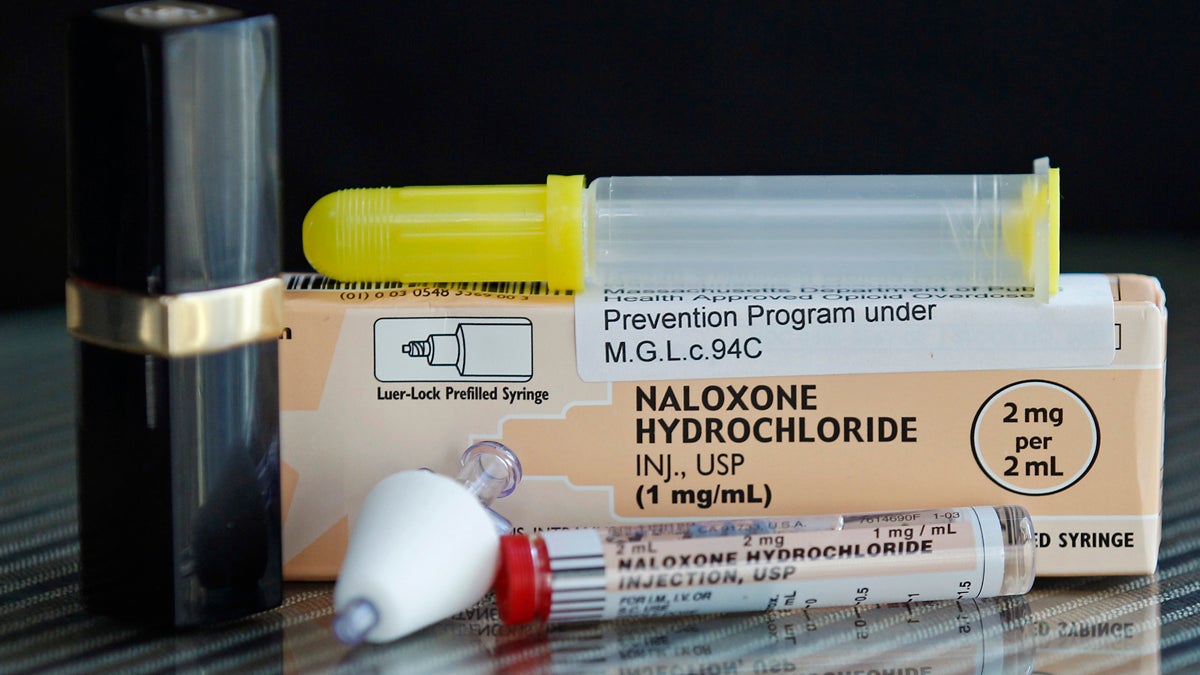After spike in heroin ODs, Delaware County supports equipping police with life-saving drug

In this Tuesday Feb. 27, 2012 photo, a tube of Naloxone Hydrochloride, also known as Narcan, is shown for scale next to a lipstick container in Quincy, Mass., home. Narcan is a nasal spray used as an antidote for opiate drug overdoses. The drug counteracts the effects of heroin, OxyContin and other powerful painkillers and has been routinely used by ambulance crews and emergency rooms in the U.S. and other countries for decades. But in the past few years, public health officials across the nation have been distributing it free to addicts and their loved ones, as well as to some police and firefighters. (Charles Krupa/AP Photo, file)
So far this year, Delaware County has had at least 12 heroin-related deaths. Last year it had 52, up from 19 in 2007.
Local officials want to cut short this trend by putting naloxone in the hands of law enforcement. Naloxone, brand name Narcan, interrupts an overdose by bonding to opiate receptors in the brain.
Administered as a nasal spray, Narcan acts quickly and dramatically. Collingdale Police Chief Robert Adams said an incident from a few weeks ago solidified his support of the initiative.
“When my officers got there, there was a male in a bathtub. He was unconscious and medics got there momentarily afterwards. They pushed Narcan and he was able to walk out of the house maybe 15 minutes later,” Adams said. “He was fine.”
However, Pennsylvania law forbids law enforcement officers from administering prescription drugs. Allowing them to do so would represent a major shift in policy and approach, said Delaware County District Attorney Jack Whelan.
Whelan stands behind this change and wants to fast-track legislation to change that law. If sweeping legislation is not feasible, Whelan said he’d like to see a pilot program for Delaware County.
A more proactive public safety role for police is not new, Adams said.
“When I was first hired, we didn’t carry CPR pocket masks, now almost every officer carries one,” he said. “I think this is part of the progression in police training and public service.”
Adams estimates that once legislation is passed, rolling out a naloxone program would take another 60 to 90 days.
In the meantime, other Delaware County measures include forming a countywide heroin task force, outreach to area high schools and pushing for a “good Samaritan” bill, which would not penalize a 911 caller for seeking help in the case of an overdose.
Other states are experimenting with naloxone programs. Starting in 2006, Massachusetts’ naloxone distribution program was the first of its kind and has stopped more than 2,500 overdoses since its inception.
New Jersey and New York also are experimenting with their own pilot programs and legislative changes.
WHYY is your source for fact-based, in-depth journalism and information. As a nonprofit organization, we rely on financial support from readers like you. Please give today.

